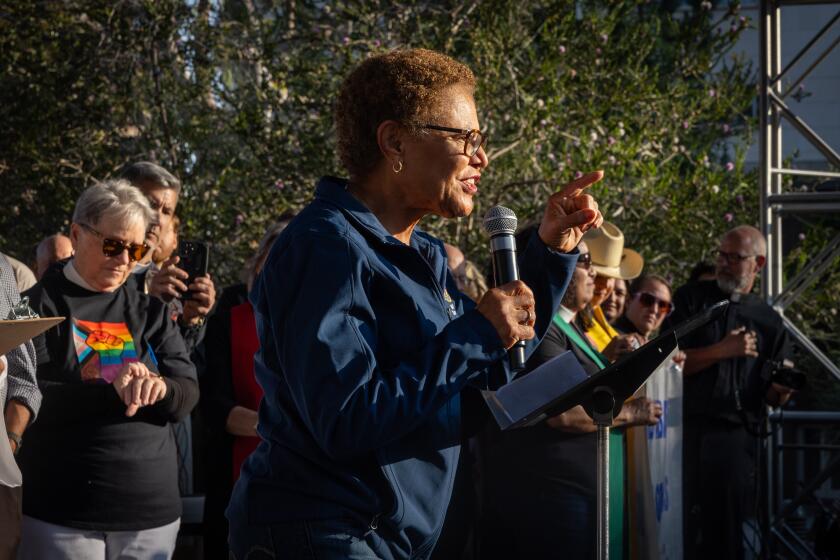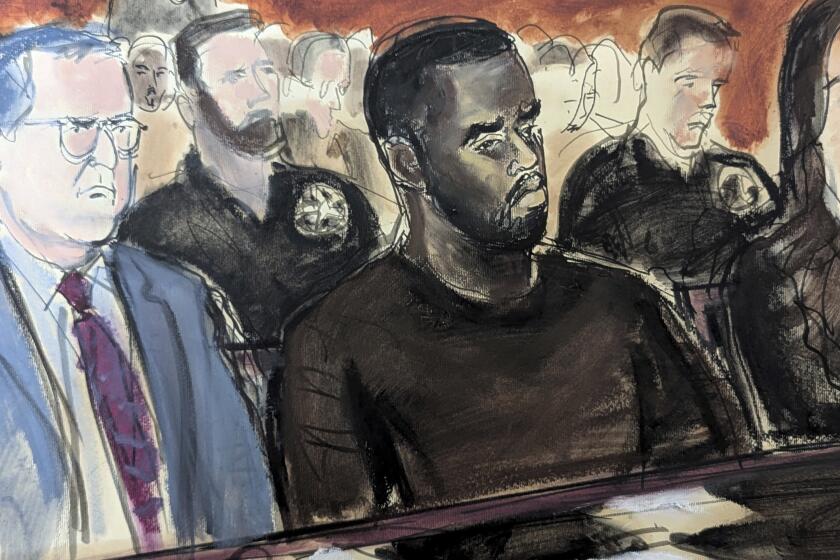Carmel Valley Told Recession, Not Route 56, Is Slowing Park Funds
- Share via
Carmel Valley residents, concerned that money earmarked for parks and public improvements will be used to acquire property for a freeway they don’t want, were assured Tuesday night that their fears are groundless.
The economic recession, which has slowed local building to a trickle, has cut off developers’ funds that would have paid for niceties such as parks, a library and a fire station, a San Diego city financial planner told an audience of skeptical residents of the planned community, formerly known as North City West.
Jerry Mailhot, co-chairman of the Carmel Valley Coalition, said shortfalls in the public facilities budget began at a time when San Diego was beginning to acquire property for Route 56, a planned east-west freeway linking coastal Interstate 5 with inland I-15.
“When we asked why the city was delaying our parks, they told us that it was because they didn’t have the money,” Mailhot said. “But we figured that they were using the funds on” Route 56, which cuts through the heart of Carmel Valley and is opposed by the coalition and many homeowners there.
However, Kenneth Weinberg, facilities financing project manager for the city, said the shortfall is “a product of the building slowdown. The developers are not taking out many building permits, so they are not required to pay into the facilities benefit assessment fund,” he said. “It’s the recession that has caused the problem.”
Weinberg said that, of the 1,200 building permit requests expected for the current fiscal year, only 404 materialized. Each permit requires the developer to deposit about $10,000 in a city fund to provide public facilities in the affected community.
About six parks, a branch library and a fire station are scheduled to be built in Carmel Valley, which lies on the eastern side of I-5 at the northwesternmost corner of San Diego’s boundaries, according to Joe Gabaldon, aide to City Councilwoman Abbe Wolfsheimer. He said the estimated shortfall in the facilities fund is about $11 million.
The financial problem was complicated when the two major developers in Carmel Valley asked that they be paid for public facilities they had installed but for which they had not been reimbursed.
In the past, Baldwin Co. and Pardee Construction had built the community’s infrastructure--streets, parks, traffic signals--and then billed the city, which paid for the improvements from the facilities funds.
“Let’s face it, the developers could do those things faster and cheaper than the city,” Weinberg said. “Now, however, they need the money themselves, and we have to come up with the funds.”
Property costs for Route 56 also must come out of the assessment fees, Weinberg said, but he added that the highway expenses are not draining the fund, because the San Diego Assn. of Governments has agreed to lend the city the money necessary to acquire the freeway right of way. A $5-million loan is being negotiated with Sandag, he said.
Weinberg called the “money crunch” a temporary problem that will be resolved when building speeds up again.
Mailhot and other Carmel Valley residents questioned why the property acquisition must continue when lawsuits against the construction of the freeway are pending and when the majority of the community is opposed to the route. Weinberg said the decision to build the road was made by the City Council in 1985 and that any change in plans will be up to the council, not the community.
More to Read
Sign up for Essential California
The most important California stories and recommendations in your inbox every morning.
You may occasionally receive promotional content from the Los Angeles Times.













